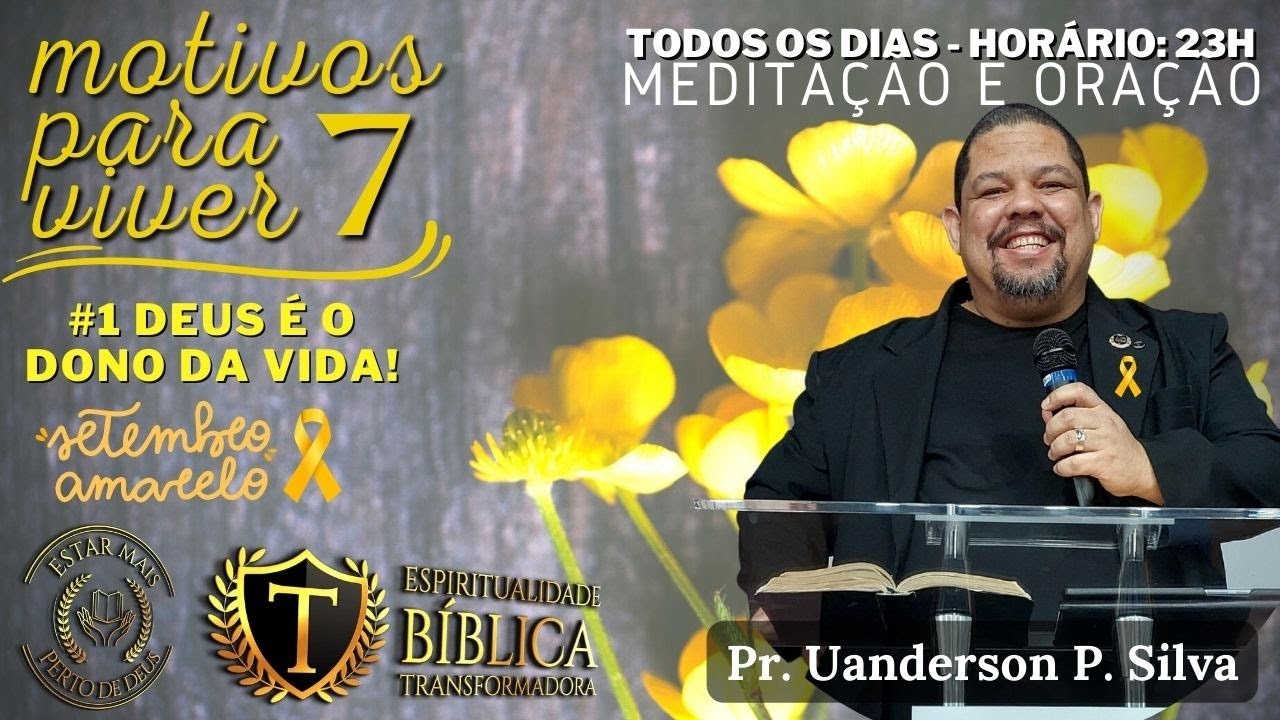Setembro Amarelo: precisamos falar para prevenir! - Parte 1
Summary
TLDRThis video script addresses the sensitive and critical issue of suicide prevention, especially during September's 'Yellow September' campaign. It highlights the staggering statistics of suicide rates globally and in Brazil, emphasizing the importance of early detection and intervention. The script debunks common myths about suicide, stressing that it's often linked to mental health disorders and not merely a personal decision. It underscores the significance of discussing suicide openly to raise awareness and provide support, countering the belief that such conversations increase the risk.
Takeaways
- 🌟 The 'September Yellow Campaign' is a significant initiative aimed at raising awareness and preventing suicide.
- 🗓️ September is chosen for this campaign because September 10th is recognized as World Suicide Prevention Day.
- 📊 In Brazil, there are approximately 13,000 suicide cases annually, and globally, it's around one million, with someone committing suicide every 40 seconds.
- 📈 The risk of suicide is higher among young people, with 96.8% of cases associated with mental disorders, most commonly depression, bipolar disorder, and substance abuse.
- 🔍 The campaign is organized by the Brazilian Association of Psychiatry and the Federal Council of Medicine to highlight the importance of prevention.
- 🧠 Suicide is a complex result of the interaction of psychological, biological, genetic, cultural, and socio-environmental factors.
- 🚫 Common myths about suicide include the belief that it's an individual decision, that those who talk about it won't do it, and that discussing it increases the risk.
- 🔑 It's crucial to understand the signs of suicide risk, including suicidal thoughts, plans, and attempts, as they can indicate a person's state of mind.
- ⚠️ Stigma and lack of understanding are significant barriers to detecting and preventing suicide, emphasizing the need for awareness and education.
- 📚 The script is based on the official guidelines of the 'September Yellow Campaign', which can be accessed on their website for more detailed information.
Q & A
What is the significance of September in relation to suicide prevention?
-September is significant for suicide prevention because it is when the 'Campaign of Yellow September' takes place, aiming to raise awareness and promote effective prevention strategies for suicide.
Which organizations in Brazil have been promoting the suicide prevention campaign since 2014?
-The Brazilian Association of Psychiatry and the Federal Council of Medicine have been promoting the suicide prevention campaign since 2014.
Why is September chosen for the suicide prevention campaign?
-September is chosen for the campaign because September 10th is recognized as World Suicide Prevention Day.
What is the annual prevalence of suicide in Brazil according to the script?
-The script states that there are approximately 13,000 suicide cases per year in Brazil.
How often does a suicide occur globally, as mentioned in the script?
-According to the script, a person commits suicide every 40 seconds globally.
What is the percentage of suicide cases related to mental disorders in the script's data?
-The script indicates that 96.8% of suicide cases are related to some mental disorder.
What are the three most prevalent mental disorders associated with suicidal behavior according to the script?
-The three most prevalent mental disorders associated with suicidal behavior are, in order: depression, bipolar disorder, and substance abuse.
What percentage of the Brazilian population has had suicidal thoughts at some point in their lives, as per the script?
-The script mentions that 17% of the Brazilian population has had suicidal thoughts at some point in their lives.
What are the seven main myths about suicidal behavior that the script aims to debunk?
-The script aims to debunk myths such as: 1) Suicide is an individual decision, 2) If someone talks about suicide, they are not at risk, 3) People who say they will commit suicide are just seeking attention, 4) If someone who was depressed and suicidal starts to improve, they are no longer at risk, 5) If someone shows signs of improvement or survives a suicide attempt, they are out of danger, 6) Talking about suicide increases the risk, and 7) It is forbidden for the media to talk about suicide.
Why is it important to discuss suicide according to the script?
-Discussing suicide is important because it helps people have more information, feel that they can seek help, and can even help alleviate anxiety and the distress that suicidal thoughts bring.
What is the role of mental health professionals in suicide prevention as highlighted in the script?
-Mental health professionals play a crucial role in identifying risks, intervening early, and providing adequate treatment to reduce the risk of suicide.
Outlines

Cette section est réservée aux utilisateurs payants. Améliorez votre compte pour accéder à cette section.
Améliorer maintenantMindmap

Cette section est réservée aux utilisateurs payants. Améliorez votre compte pour accéder à cette section.
Améliorer maintenantKeywords

Cette section est réservée aux utilisateurs payants. Améliorez votre compte pour accéder à cette section.
Améliorer maintenantHighlights

Cette section est réservée aux utilisateurs payants. Améliorez votre compte pour accéder à cette section.
Améliorer maintenantTranscripts

Cette section est réservée aux utilisateurs payants. Améliorez votre compte pour accéder à cette section.
Améliorer maintenantVoir Plus de Vidéos Connexes

7 Motivos para viver! 1# Deus é o dono da vida!

Rompamos con el tabú de hablar del suicidio | María De Quesada | TEDxValencia

Nama: Angelica Nirrahman Atriekasari

Kekerasan Seksual dan Kekerasan Berbasis Gender dalam Situasi Bencana

Preventing suicide and coping with loss

Non-Binary People Confront Piers Over Gender-Neutral Controversy | Good Morning Britain
5.0 / 5 (0 votes)
